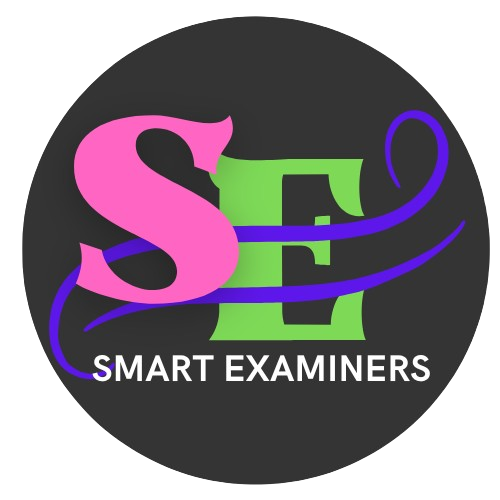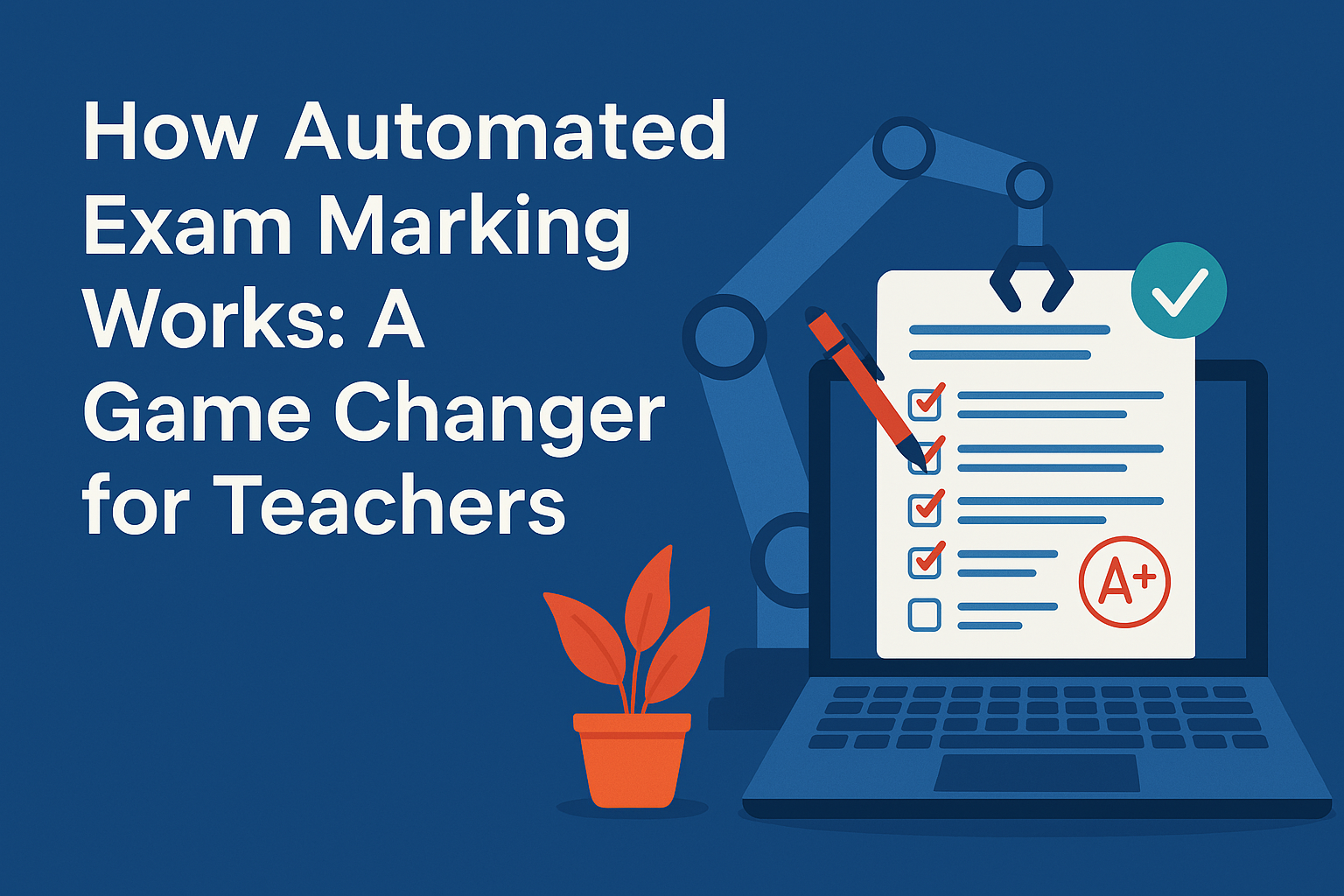How Automated Exam Marking Works: A Game Changer for Teachers
Introduction
In today's educational landscape, teachers face numerous challenges, including large class sizes, diverse student needs, and time-consuming administrative tasks. One significant burden is the manual grading of exams, which can be both labor-intensive and prone to inconsistencies. Enter automated exam marking—a technological advancement designed to streamline the grading process, enhance accuracy, and provide timely feedback to students. This article delves into the workings of automated marking systems, their accuracy, benefits, and highlights the role of SmartExaminers, a leading platform in this domain.
Understanding Automated Exam Marking
What is Automated Exam Marking?
Automated exam marking refers to the use of technology, particularly artificial intelligence (AI) and machine learning algorithms, to evaluate and grade student assessments without direct human intervention. These systems are designed to process various types of exam formats, from multiple-choice questions to essays, providing scores and feedback in a fraction of the time it would take a human grader.
How Does Automated Marking Work?
The process of automated exam marking typically involves the following steps:
-
Data Input: Students submit their responses digitally, or handwritten scripts are scanned and digitized.
-
Response Analysis: The system analyses the responses using predefined criteria and algorithms. For objective questions, it matches answers against a key. For subjective answers, advanced AI models assess content relevance, coherence, and structure.
-
Scoring: Based on the analysis, the system assigns scores to each response.
-
Feedback Generation: Some systems provide detailed feedback, highlighting areas of strength and those needing improvement.
-
Result Compilation: Scores and feedback are compiled and made available to both students and educators.
Accuracy of Automated Marking Systems
Ensuring Precision in Grading
Automated marking systems are designed to enhance grading accuracy by minimizing human errors and biases. According to research, these systems can perform to a set high standard over time, while human examiners must be regularly trained to provide reliable ratings.
Handling Subjective Responses
While multiple-choice questions are straightforward for automated systems, grading essays and open-ended questions poses challenges. However, advancements in natural language processing (NLP) have enabled AI models to evaluate such responses effectively. These models assess grammar, relevance, argument strength, and coherence to provide accurate scores.
Continuous Improvement
To maintain and improve accuracy, automated systems undergo continuous training using vast datasets. Regular updates ensure they adapt to changing curricula and grading standards.
Benefits of Automated Exam Marking
Time Efficiency
Automated systems significantly reduce the time required for grading. Tasks that once took days can now be completed in minutes, allowing teachers to focus more on instruction and student engagement. This efficiency is particularly beneficial in large classrooms or institutions with substantial student populations.
Consistency and Fairness
Human grading can be influenced by subjective factors, leading to inconsistencies. Automated systems apply uniform criteria to all assessments, ensuring each student is evaluated fairly. This consistency helps maintain the integrity of the grading process.
Detailed Feedback
Beyond scores, many automated systems provide comprehensive feedback, pinpointing specific areas where students excel or need improvement. This immediate feedback supports personalized learning and helps students address their weaknesses promptly.
Data-Driven Insights
Automated marking platforms often include analytics tools that offer insights into student performance trends. Educators can identify common areas of difficulty, informing instructional strategies and curriculum adjustments.
Cost-Effectiveness
By reducing the need for extensive human grading, institutions can allocate resources more efficiently. Over time, the investment in automated systems can lead to significant cost savings.
SmartExaminers: Revolutionizing Exam Marking
Overview of SmartExaminers
SmartExaminers is an AI-powered platform designed to streamline the exam marking process for educators. It offers tools for generating accurate answers and marking schemes, catering to various assessment formats.
Key Features
-
AI-Powered Answer Generation: Utilizes advanced algorithms to produce precise answers and marking guides, reducing the workload on teachers.
-
Flexibility: Supports various exam formats, accommodating the diverse needs of educators and institutions.
-
User-Friendly Interface: Designed with educators in mind, ensuring ease of use without requiring extensive technical knowledge.
Impact on Educators
By integrating SmartExaminers into their workflow, teachers can experience:
-
Reduced Grading Time: Automates the marking process, freeing up time for other instructional activities.
-
Enhanced Accuracy: Minimizes human errors, ensuring students receive the scores they deserve.
-
Improved Feedback Quality: Provides detailed insights into student performance, aiding in personalized instruction.
Addressing Concerns and Limitations
Potential Challenges
While automated marking offers numerous benefits, it's essential to acknowledge potential challenges:
-
Initial Setup Costs: Implementing such systems may require upfront investment in technology and training.
-
Technical Issues: Dependence on technology means that system failures or glitches can disrupt the grading process.
-
Limitations in Assessing Creativity: AI may struggle to evaluate responses that require creative or critical thinking, where multiple interpretations are valid.
Mitigation Strategies
To address these challenges, institutions can:
-
Provide Adequate Training: Ensure educators are well-versed in using the technology effectively.
-
Maintain Human Oversight: Use automated systems as supportive tools rather than complete replacements for human graders, especially for complex assessments.
-
Regularly Update Systems: Keep the software updated to handle new types of assessments and maintain security.
Future of Automated Exam Marking
The field of automated exam marking is evolving rapidly, with advancements in AI and machine learning driving new possibilities. As technology improves, we can expect the following trends:
1. More Sophisticated AI Models
Future automated grading systems will incorporate even more advanced natural language processing (NLP) and machine learning algorithms, enabling them to assess essays and open-ended questions with near-human accuracy. AI will continue learning from human grading patterns to enhance its reliability.
2. Improved Handwriting Recognition
One limitation of current systems is their struggle with handwritten responses, particularly those with diverse handwriting styles. However, AI-powered optical character recognition (OCR) is advancing, making it easier for automated systems to accurately interpret handwritten scripts.
3. AI-Powered Plagiarism and Authenticity Detection
As automated grading systems become more prevalent, ensuring the originality of student responses will be crucial. AI tools will be enhanced to detect plagiarism, identify copied answers, and verify the authenticity of student work.
4. Personalized Learning Insights
Beyond grading, automated systems will increasingly provide personalized learning recommendations based on student performance. These insights will help educators tailor lessons to individual student needs, improving overall learning outcomes.
5. Integration with Online Learning Platforms
With the rise of e-learning, automated grading will be seamlessly integrated with learning management systems (LMS) such as Google Classroom, Moodle, and Blackboard. This will allow real-time grading, analytics, and automated feedback within online courses.
FAQs About Automated Exam Marking
To provide even more value, here are some commonly asked questions about automated exam marking:
1. What is automated exam marking?
Automated exam marking is the use of AI and machine learning to evaluate student responses without human intervention. It grades exams based on predefined criteria, reducing workload for teachers.
2. How accurate is automated grading?
Modern AI-powered grading systems, such as SmartExaminers, achieve high accuracy, especially for objective questions. For essays and open-ended questions, AI grading is continually improving by analyzing patterns in human-marked scripts.
3. Can AI mark handwritten exams?
Yes, but with some limitations. AI-powered OCR (Optical Character Recognition) technology can read and grade handwritten responses, though it may struggle with poor handwriting. Advances in AI are addressing these challenges.
4. Does automated marking work for all subjects?
Automated marking works best for multiple-choice, fill-in-the-blank, and structured short-answer questions. For essays, literature, and creative writing, AI can assess grammar, structure, and relevance, but human oversight is often recommended for deeper analysis.
5. What are the benefits of automated grading for teachers?
-
Saves time by reducing manual grading workload.
-
Ensures consistency in grading, eliminating bias.
-
Provides instant feedback to students.
-
Reduces costs associated with hiring external examiners.
6. Can students cheat automated grading systems?
AI grading systems are becoming increasingly robust against cheating. SmartExaminers, for example, detects copy-pasted answers and ensures fair grading by cross-referencing with pre-existing data.
7. How does SmartExaminers improve exam marking?
SmartExaminers simplifies the marking process by:
-
Generating answers and marking schemes instantly based on uploaded exam files.
-
Providing detailed feedback for educators and students.
-
Offering multiple payment options for easy access.
Conclusion
Automated exam marking is transforming education by providing fast, accurate, and unbiased grading. With AI-driven systems like SmartExaminers, teachers can save time, reduce workload, and ensure fair assessments for students. While challenges exist, advancements in AI continue to enhance the capabilities of automated grading.
As education moves towards digital transformation, embracing AI-powered exam marking will be a game changer for teachers and institutions worldwide. SmartExaminers is at the forefront of this revolution, ensuring that educators spend less time grading and more time teaching.
Are you ready to experience the future of exam marking? Try SmartExaminers today and revolutionize how you grade exams! 🚀
 SmartExaminers
SmartExaminers


